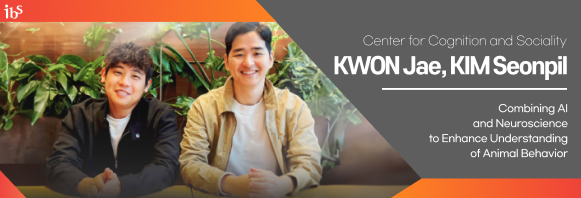주메뉴
- About IBS 연구원소개
-
Research Centers
연구단소개
- Research Outcomes
- Mathematics
- Physics
- Center for Underground Physics
- Center for Theoretical Physics of the Universe (Particle Theory and Cosmology Group)
- Center for Theoretical Physics of the Universe (Cosmology, Gravity and Astroparticle Physics Group)
- Dark Matter Axion Group
- Center for Artificial Low Dimensional Electronic Systems
- Center for Theoretical Physics of Complex Systems
- Center for Quantum Nanoscience
- Center for Exotic Nuclear Studies
- Center for Van der Waals Quantum Solids
- Center for Relativistic Laser Science
- Chemistry
- Life Sciences
- Earth Science
- Interdisciplinary
- Center for Neuroscience Imaging Research (Neuro Technology Group)
- Center for Neuroscience Imaging Research (Cognitive and Computational Neuroscience Group)
- Center for Algorithmic and Robotized Synthesis
- Center for Genome Engineering
- Center for Nanomedicine
- Center for Biomolecular and Cellular Structure
- Center for 2D Quantum Heterostructures
- Institutes
- Korea Virus Research Institute
- News Center 뉴스 센터
- Career 인재초빙
- Living in Korea IBS School-UST
- IBS School 윤리경영


주메뉴
- About IBS
-
Research Centers
- Research Outcomes
- Mathematics
- Physics
- Center for Underground Physics
- Center for Theoretical Physics of the Universe (Particle Theory and Cosmology Group)
- Center for Theoretical Physics of the Universe (Cosmology, Gravity and Astroparticle Physics Group)
- Dark Matter Axion Group
- Center for Artificial Low Dimensional Electronic Systems
- Center for Theoretical Physics of Complex Systems
- Center for Quantum Nanoscience
- Center for Exotic Nuclear Studies
- Center for Van der Waals Quantum Solids
- Center for Relativistic Laser Science
- Chemistry
- Life Sciences
- Earth Science
- Interdisciplinary
- Center for Neuroscience Imaging Research (Neuro Technology Group)
- Center for Neuroscience Imaging Research (Cognitive and Computational Neuroscience Group)
- Center for Algorithmic and Robotized Synthesis
- Center for Genome Engineering
- Center for Nanomedicine
- Center for Biomolecular and Cellular Structure
- Center for 2D Quantum Heterostructures
- Institutes
- Korea Virus Research Institute
- News Center
- Career
- Living in Korea
- IBS School
News Center
| Title | Combining AI and Neuroscience to Enhance Understanding of Animal Behavior | ||||
|---|---|---|---|---|---|
| Name | 전체관리자 | Registration Date | 2024-12-27 | Hits | 1710 |
| att. |
 thumb.JPG
thumb.JPG
|
||||
Combining AI and Neuroscience to Enhance Understanding of Animal Behavior
In recent years, artificial intelligence (AI) has become a hot topic across academia and industry. Its expanding applications now include analyzing the complex movements of animals. The Center for Cognition and Sociality within the Institute for Basic Science (IBS) has developed an AI-based analysis tool called SUBTLE, which can classify and analyze animal behavior by learning from 3D motion data. This collaboration between neuroscience and data science has enabled AI to accurately distinguish complex animal movements. The integration of AI into animal behavior analysis, a field with potential implications for human disease research, has significantly improved the precision of such studies. Dr. KIM Seonpil, a postdoctoral researcher who participated in the study, remarked, “This research has given me confidence that integrating AI into neuroscience can achieve what was previously impossible.” Fellow postdoctoral researcher Dr. KWON Jae added, “Ultimately, creating a big data repository of behavioral data from various animals could help us uncover fundamental principles governing behavior across all biological species.” Here, the two researchers share insights into their past achievements and future aspirations. Q. Please introduce yourself. Q. Please explain your main research responsibilities at IBS. Q. Please introduce some of the most notable achievements of the Center for Cognition and Sociality. Q. How did the development of SUBTLE begin? Q. SUBTLE has been applied to analyze mouse behavior and shown potential for use with humans and primates. What other animals could it be applied to? Q. How is SUBTLE being received in academia? We would like to know potential applications of animal behavior categorization and analysis. Q. Minimizing human intervention seems crucial in animal behavior analysis. What challenges did you face during this research? Q. What kind of support would help your future research plans? |
|||||
| Next | |
|---|---|
| before |
- Content Manager
- Public Relations Team : Yim Ji Yeob 042-878-8173
- Last Update 2023-11-28 14:20












